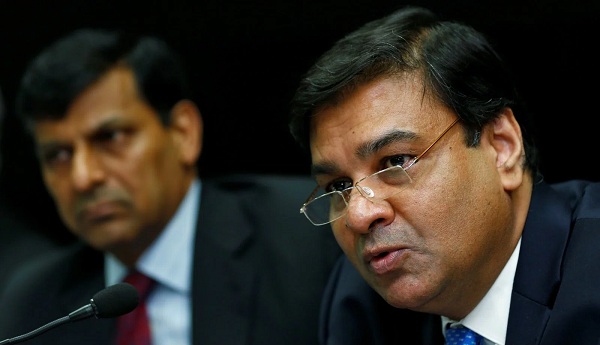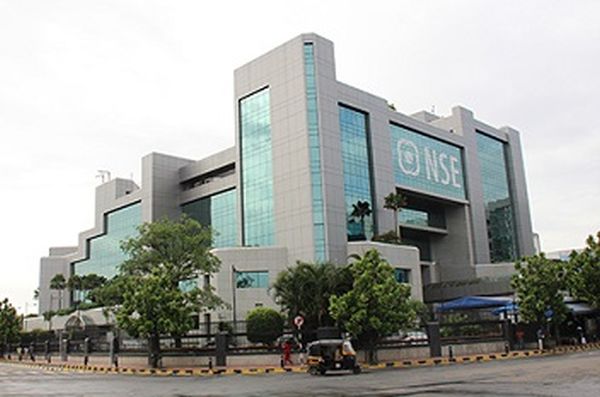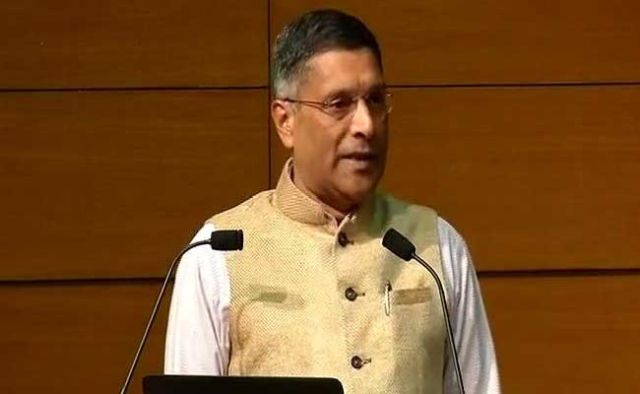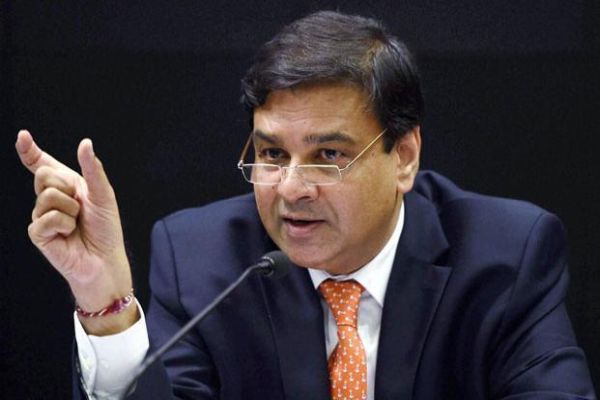
by Editor | May 25, 2021 | News, Politics

(Photo Courtesy: Reuters/ Danish Siddiqui)
Mumbai : Reserve Bank of India (RBI) Governor Urjit Patel resigned on Monday with immediate effect, citing “personal reasons”, setting of a major crisis in India’s politico-economic sphere, even as his various predecessors hinted that the move was rooted in the recent controversy involving the government and the central bank.
Patel’s resignation comes in the backdrop of the ongoing tiff between the government and the central bank over the liquidity and credit crunch in the economy that provoked an extraordinary meeting of the RBI board on November 19.
“On account of personal reasons, I have decided to step down from my current position effective immediately,” Patel said in a brief statement released by the RBI.
Patel had taken charge as Governor on September 4, 2016, for a three-year term, following Raghuram Rajan’s decision not to seek a second term which had almost become the norm with earlier Governors.
The historic tensions in government-central bank relations were reignited in October when, in a public lecture, RBI Deputy Governor Viral Acharya talked about the independence of the Reserve Bank, arguing that any compromise could be “potentially catastrophic” for the economy.
The government responded with the Finance Ministry seeking discussions with the central bank under the never-used-before Section 7 of the RBI Act which empowers the government to issue directions to the RBI Governor, who then summoned a meeting of the bank board.
The government’s differences with the RBI centres on four issues – it wanted liquidity support to head off any risk of a credit freeze, a relaxation in capital
requirements for lenders, relaxing the prompt corrective action (PCA) rules for banks struggling with accumulated non-performing assets (NPAs or bad loans) and support for micro, small and medium enterprises.
Central to the liquidity issue was the government’s demand that the RBI hand over its surplus reserves by amending its “economic capital framework”. Analysts noted that the government’s demand came in the face of a huge fiscal deficit and the need to boost the economy in an election year.
The RBI’s central board has 18 members, which includes the Governor and his four deputies as full-time official directors, while the rest have been nominated by the government, including the Economic Affairs and Financial Services Secretaries.
Prime Minister Narendra Modi met with Patel before the board meeting and what emerged on November 19 was seen as settling the debate on the central bank’s autonomy and clearly establishing the government as a stakeholder in policy making.
On the issue of reserves, the RBI board decided to form an expert committee to examine its economic capital framework, which will decide the amount of reserves it can maintain, handing over the balance to the government.
On the matter of relaxing the PCA norms for banks with bad loans, it decided that the issue will be examined by the RBI’s Board for Financial Supervision.
Eleven of the 21 state-run banks are under the PCA framework, while NPAs accumulated in the Indian banking system have touched a staggering Rs 12 lakh crore.
“The RBI-government fight has been pushed down, abated for now and postponed, but the NPAs issue continues to remain,” Sudipto Mundle on the Board of Governors of the National Institute of Public Finance and Policy had said following the RBI board meeting.
Describing Patel’s resignation as a statement of protest, former RBI Governor Raghuram Rajan said the government needs to understand what prompted the exit.
“It’s probably only the second resignation in RBI’s history, may be the first explicit resignation, and therefore we have to look at the circumstances that have led to it. It’s a statement of dissent and the government has to be very careful in dealing with it…so that the autonomy of the institution as well as the credibility is preserved,” Rajan told a news channel.
He said the act of resignation is the “ultimate weapon” in a government appointee’s portfolio and they do not exercise it lightly.
“To that extent we must look at this decision and understand why Dr Patel, who was appointed by this government, essentially exercised this particular option,” he added.
Another former RBI Governor, C. Rangarajan, worried about the fallout of Patel’s quitting on the market.
“It is saddening since the resignation of RBI Governor will have its impact on the financial market. Though he (Patel) has cited as personal reasons for quitting, obviously there must have been some other reasons for his resignation,” Rangarajan said.
Congress President Rahul Gandhi said Patel’s quitting is a sign that the government is getting increasingl desperate.
“The government is taking measures that are dangerous for our country. The RBI Governor has resigned because he is protecting the institution of the RBI and he is not able to function. Taking away the reserves from the RBI to save your skin is an act that is against this nation,” he said.
“I am very-very proud that people in all walks of life and all institutions are standing up. We are not going to tolerate what is happening in the CBI, what is happening in the RBI and what is happening to every institution in this country, and all of us are saying this in one voice,” he added.
Asked about the government-RBI tiff, former Chief Economic Advisor Arvind Subramanian told reporters here on Saturday that the central bank’s autonomy must be protected because the country will benefit from strong institutions.
“I have myself advocated that RBI should play a pro-active role, but its surplus funds should not go towards routine financing of spending and deficit financing — that would amount to raiding the RBI,” he added.
On the RBI board, with a majority of government nominees, the former CEA said: “I think that part of maintaining a real autonomy is not to politicise the board. The board should not be politicised. Not only it must not be done, it must not be seen to be done either.”
—IANS

by Editor | May 25, 2021 | Economy, Markets, News
 Mumbai : Broadly negative global cues as well as disappointment over the Reserve Bank’s monetary policy announcement dragged the key Indian equity indices to end in the red for the second straight day on Wednesday.
Mumbai : Broadly negative global cues as well as disappointment over the Reserve Bank’s monetary policy announcement dragged the key Indian equity indices to end in the red for the second straight day on Wednesday.
According to market observers, caution over initial signs on re-emergence of trade tension between the US and China subdued the Asian markets and subsequently impacted the domestic indices.
Even the disappointment over the Reserve Bank of India’s (RBI) decision to maintain its stance of “calibrated tightening” unchanged had its impact on the investor sentiments.
In addition, the RBI’s monetary policy committee (MPC) kept its key lending rate for commercial banks unchanged at 6.5 per cent for the second time in succession.
However, RBI’s announcement to continue its liquidity infusion measures including OMOs (open market operations) arrested the sharp decline in the equity market.
Till now, RBI has injected durable liquidity through open market operation purchases to the tune of Rs 1.36 trillion in the current financial year.
“The pace of our OMOs has stepped up with the injection of slightly over Rs 1 trillion in the last three months. Second, the RBI has also provided liberal infusion of liquidity through term repos in addition to the usual provision via the LAF…,” RBI Deputy Governor Viral V. Acharya said at the post-MPC meeting press conference.
“Based on our assessment of durable liquidity needs going forward, we have already announced an OMO purchase program of Rs 40,000 crore for December. We expect that this increased frequency and quantum of OMO purchases may be required until end of March.”
Index-wise, the S&P BSE Sensex lost close to 250 points, while the NSE Nifty50 settled at 10,784.95 points.
All sectoral indices on BSE ended in the red led by metal, auto and healthcare stocks. Interest sensitive banking stocks traded 1 per cent lower on the BSE.
However, the Nifty IT index saw a recovery as it was the only sectoral index ending in green with marginal gains.
The Sensex settled lower 0.69 per cent, or 249.90 points, at 35,884.41, from its previous close of 36,134.31. It touched an intra-day high of 36,048.65 and a low of 35,777.81.
The Nifty50 lost 84.55 points or 0.74 per cent to close the session at 10,784.95.
“RBI has adopted a cautious approach and held on to rates. Reducing SLR requirement from next quarter onwards is a welcome move,” said Rajesh Sharma, MD, Capri Global Capital.
“Some more measures like reducing risk weight specifically for NBFC lending to MSME sector to boost confidence in NBFCs would have triggered positive sentiment in the sector.”
Just after the monitory policy announcement began at 2.30 pm the Sensex traded lower by
203.62 points.
—IANS

by Editor | May 25, 2021 | Corporate, Corporate finance, Interviews

Arvind Subramanian
New Delhi : In the midst of a government-Reserve Bank of India (RBI) tussle over utilisation of capital reserves of the central bank, former Chief Economic Advisor Arvind Subramanian strongly supports the government’s view, saying the RBI is holding excess capital between Rs 4.5 and Rs 7 lakh crore which should be used to recapitalise the banks.
However, he adds that deploying capital is a decision for the RBI to take which it must do “voluntarily and proactively without even the whiff of interference from outside”.
Subramanian says he realises that in making this suggestion he is up against all the eminent current and former RBI officials, who argue that the RBI actually needs all the capital it has, but they are wrong.
“These officials command the respect of the public, and for good reasons. I think they are wrong. As Margaret Thatcher used to say, ‘One man and the Truth is a majority’,” the noted economist says in his upcoming book “Of Counsel: The Challenges of the Modi-Jaitley Economy”, published by Penguin.
“It is almost certainly the case that more money will be needed to make banks healthy… It is possible that the government will need to provide anywhere between Rs 3-5 lakh crore — in addition to the amounts already spent — to restore the fundamentally viable public sector banks to health,” Subramanian says.
He adds that there is only one public-sector entity — RBI — that has a strong enough balance sheet to deploy this magnitude of resources.
“Conservative estimates (as well as cross-country comparisons) based on our internal analysis suggest that if the RBI were to adopt the practices of most major central banks around the world in deciding how much capital is necessary, it would find that it has about Rs 3-4 lakh crore of excess government capital, some of which it could deploy for the clean-up,” he says.
Subramanian adds that RBI is an outlier among major central banks, holding about 28 per cent in capital, which is the fifth-largest amongst all major central banks, with two of the four above India in this ranking being oil exporters, which are special cases being highly vulnerable to the swings in the price of petroleum.
He says the RBI calculates risk based on a sample that almost no other central bank does and has set for itself a risk tolerance that is “ultra, ultra conservative, almost bordering on paranoia”.
“Whereas other central banks want to cushion against events with one per cent probability of occurring, the RBI wants to cushion against events that can occur with .001 per cent probability.”
“…Prima facie, then, it seems that the RBI is holding too much capital… Our estimate is that the RBI is holding excess capital between Rs 4.5-7 lakh crore… This excess capital should be redeployed, shifted from where it is not needed and put instead where it is needed urgently, namely, in public-sector banks,” he says.
However, he warns that any redeployment of RBI capital must be seen not as a government demand but as a voluntary commitment of the RBI for the greater good, and should be done only after extensive consultation.
“If there is one strong balance sheet and one weak, there is no good reason the former should not come to the rescue of the latter. We build up strength in balance sheets not for strength’s sake but to use that strength. Savings are meant for rainy days and when rainy days come, savings should be run down.
“During and after the global financial crisis, major central banks across the world have lent the heft of their balance sheets to pull economies out of dire economic circumstances,” the former CEA says.
He adds the legitimacy of central banks is enhanced when they take actions to address serious problems. “When reputations and strong balance sheets are put on the frontline in service of the economy, these assets, far from getting depleted, are actually replenished.”
—IANS

by Editor | May 25, 2021 | Corporate, Corporate finance, Corporate Governance

Urjit Patel
New Delhi : Appearing before the Parliamentary Standing Committee on Finance, RBI Governor Urjit Patel on Tuesday said that the effect of demonetisation was temporary while he will respond to issues related to the RBI’s autonomy and reserves in the next 10 to 15 days in the midst of differences with the government.
He told the members that the economy was faring better than the pre-demonetisation period in the “after phase” of demonetisation with the adverse effects receding, sources said.
The Reserve Bank of India’s (RBI) Governor’s appearance also came in the midst of a government-central bank tussle over autonomy, reserves to be maintained by RBI and liquidity concerns and he has been asked to give his response on these issues besides control of institutions (in respect of frauds in banks) and lending to MSME sector. It had led the central bank to flag autonomy concerns.
“He will reply in 10 to 15 days,” the sources said after the two-and-a-hour meeting.
Patel appeared before the 31-member panel headed by Congress leader M. Veerappa Moily on Tuesday to brief on the impact of demonetisation, non-performing assets (NPAs) of public sector banks and state of economy, among other issues.
The RBI Governor said the banking regulator will consider the international practice in terms of reserves kept by central banks and will share its views in its response. The government believes RBI is sitting on extra reserves which can be used to fuel growth.
While Patel maintained there was no conflict with the central government, the source said he warned the panel members, which included former Prime Minister Manmohan Singh, of the possibility of global trade war leading to a currency war.
On domestic economy, Patel is learnt to have said that the Indian economy is stabilising and is in a comfortable position with positive indicators like rising GDP, falling crude oil prices, credit growth up 15 per cent, inflation down and food inflation below 2 per cent.
“Patel said for every single dollar drop in crude oil price, there is a fall of $800 million in the country’s current account deficit (CAD) annually. You can calculate the overall benefit in terms of CAD for the more than $20 decline in oil price,” he said.
—IANS

by Editor | May 25, 2021 | Corporate, Corporate Governance

Nitin Gadkari
Mumbai : Union Road Transport and Highway Minister Nitin Gadkari on Saturday lashed out at banks saying they are not making financial closures for infrastructure projects worth Rs 2 lakh crore despite a “golden opportunity” and blamed the Reserve Bank for creating “more complications”.
“One problem presently I am facing is — We have at least 150 projects with cost involvement of Rs 2 lakh crore. The financial closures in the banks is becoming a very tough thing for the investor,” he said at the ET Awards for Corporate Excellence.
The Minister flagged the funding problem a day before the Reserve Bank of India (RBI) is to hold its board meeting in the backdrop of a tiff with the central government on several issues including a liquidity crunch and placement of limits on extension of loans on some banks.
“It is the appropriate time for the Reserve Bank to support infrastructure in the country as far as growth rate is concerned. But many times the circulars issued by the Reserve Bank are creating more complications,” the Minister said.
Gadkari said there were 403 projects with a cost involvement of Rs 3.85 lakh crore when he took charge as the minister and his department, which had a good track record, alone saved the Indian bankers from non-performing assets (NPA) of about Rs 3 lakh crore.
Further, he said while bankers supported the contractors when they were not in a good position and there were several other problems like land acquisition and environment issues, they are not doing it now when things have improved and there is a good response.
“… the economic situation is good, the government is transparent, decision making process is fast and it is a golden opportunity for the investors and contractors. I don’t know what is the reason that the banks are not making financial closures,” the Minister said.
Gadkari said if the banks were to support the infrastructure projects, his department, which contributed 3 per cent to the country’s GDP last fiscal, would account for 3.5 per cent.
“If the banks support me, I am giving the guarantee that my department will make 3.5 per cent of contribution in the GDP. All projects are economically viable, IRR (rate of return) is good but this (financial closure) is the problem,” he said.
Asked whether he brought up the issue with RBI Governor Urjit Patel, Gadkari said it was not his job and he did not want to meet him due to a bad experience.
“My experience is not good. There is no point in meeting him. One should meet those where there is some benefit, some work gets done,” he said.
—IANS





